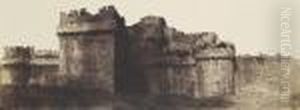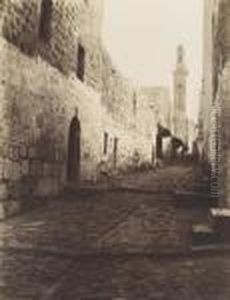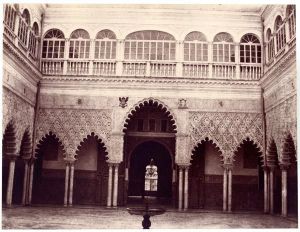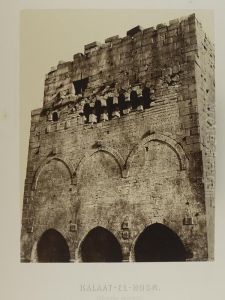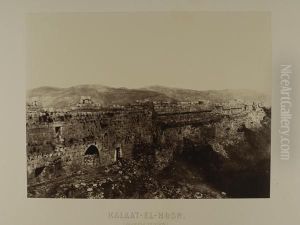Louis De Clercq Paintings
Louis De Clercq was a notable figure in the world of 19th-century photography, particularly renowned for his work in the field of travel and archaeological photography. Born in 1836 in France, De Clercq came from a wealthy background, which enabled him to pursue his interests in travel and photography without financial constraints. His contributions to photography are especially significant because of his involvement in one of the earliest photographic expeditions to the Middle East, a journey that would yield images of critical historical and cultural importance.
De Clercq's fascination with the Middle East was partly inspired by the prevailing Orientalist trends in European art and scholarship, a fascination that drove many explorers, artists, and writers of the time. However, unlike many of his contemporaries who relied on the written word or traditional art forms to document their travels, De Clercq utilized the then relatively new medium of photography. In the late 1850s, he embarked on an extensive journey through the region, visiting places such as Syria, Lebanon, Palestine, and Turkey. The photographs he took during this expedition were among the first to document the archaeological sites, landscapes, and peoples of these areas, providing invaluable insights for both scholars and the general public.
De Clercq's work was compiled into a series of albums titled 'Voyage en Orient' (Journey to the East), which were published between 1859 and 1860. These albums were groundbreaking, not only for their photographic content but also for their contribution to the field of travel literature and archaeology. They offered a visual account that complemented the textual descriptions of the Middle East found in travelogues and scholarly works of the time. De Clercq's images were characterized by their clarity, composition, and the attention to detail, qualities that made them stand out in the early days of photography.
Throughout his life, Louis De Clercq remained passionate about photography, though he never pursued it as a professional career. After his travels in the Middle East, he returned to France, where he managed his estate and continued to engage with the artistic and scholarly communities. Despite the relative brevity of his photographic career, his work had a lasting impact on the fields of photography, archaeology, and Oriental studies.
De Clercq passed away in 1901, but his legacy endures through his photographs, which continue to be studied and admired. They serve as a window into the past, offering a glimpse of the Middle East as it was in the mid-19th century, and stand as a testament to the early days of travel photography. His contributions have been recognized in various exhibitions and publications, ensuring that his role in the development of photographic art and documentation is not forgotten.
